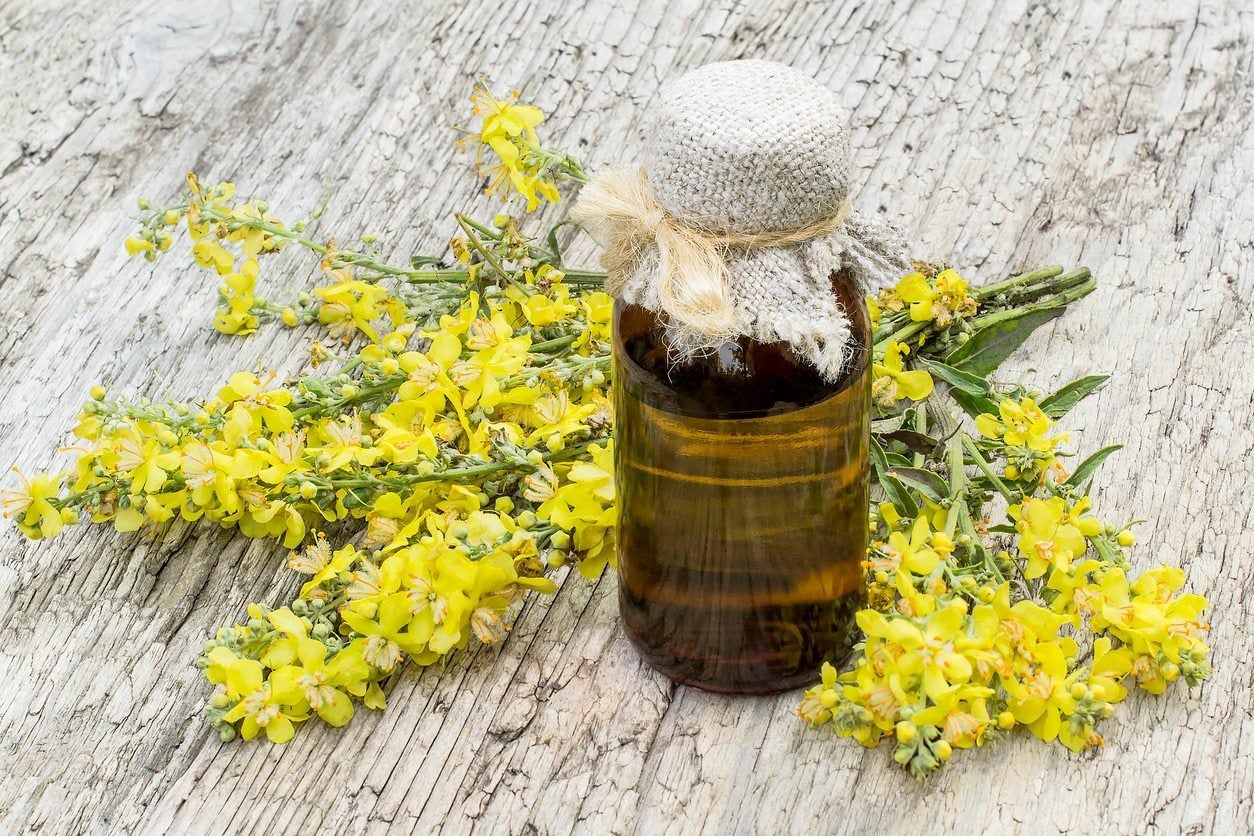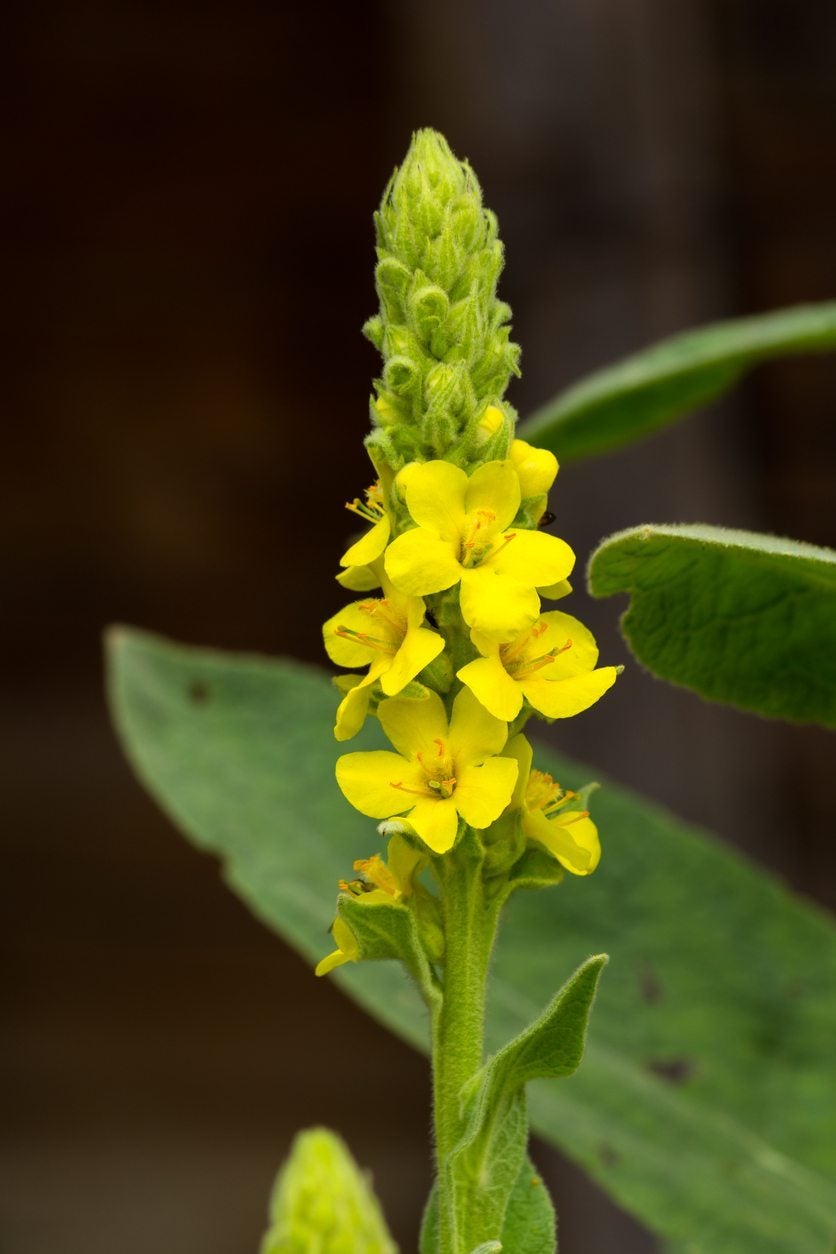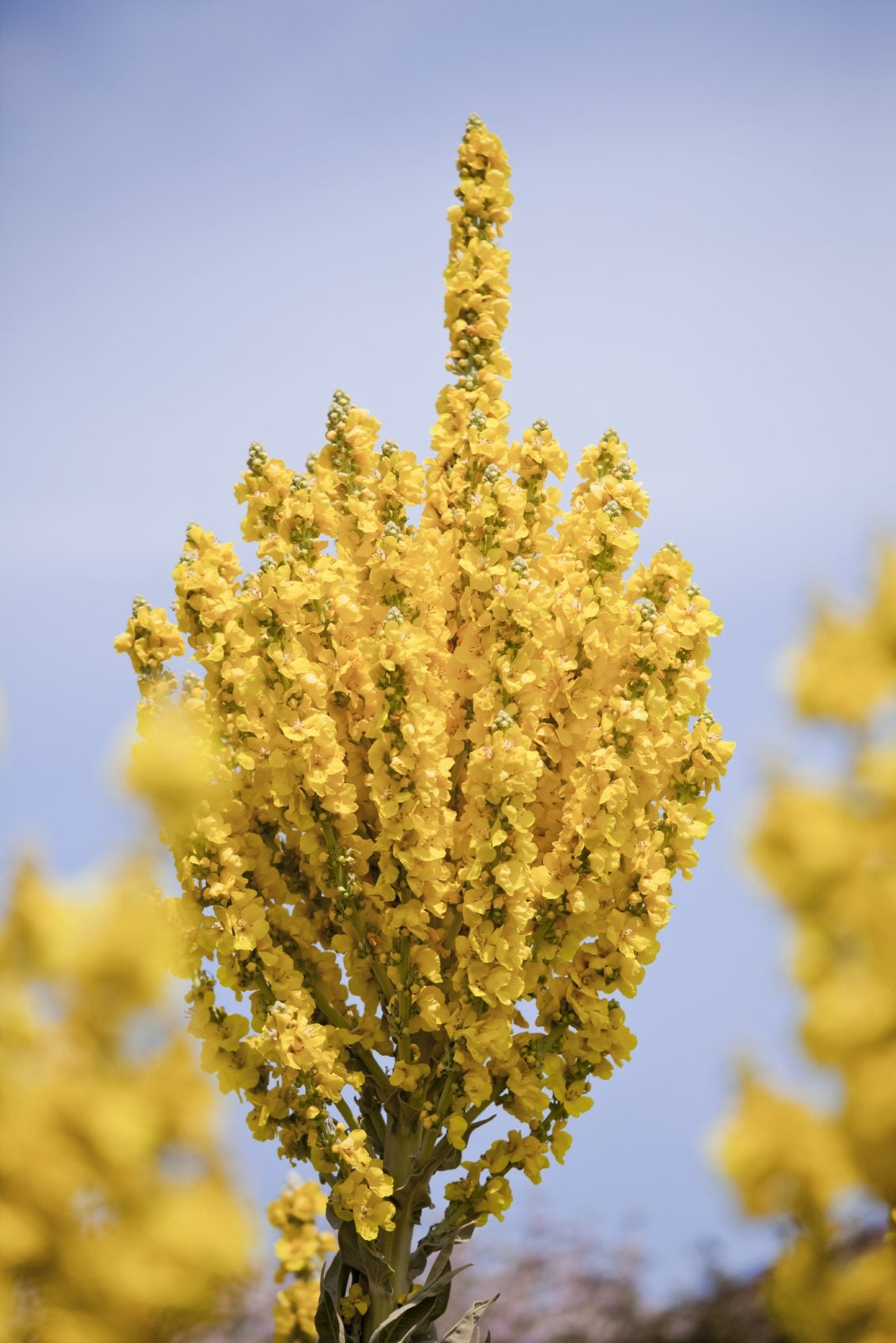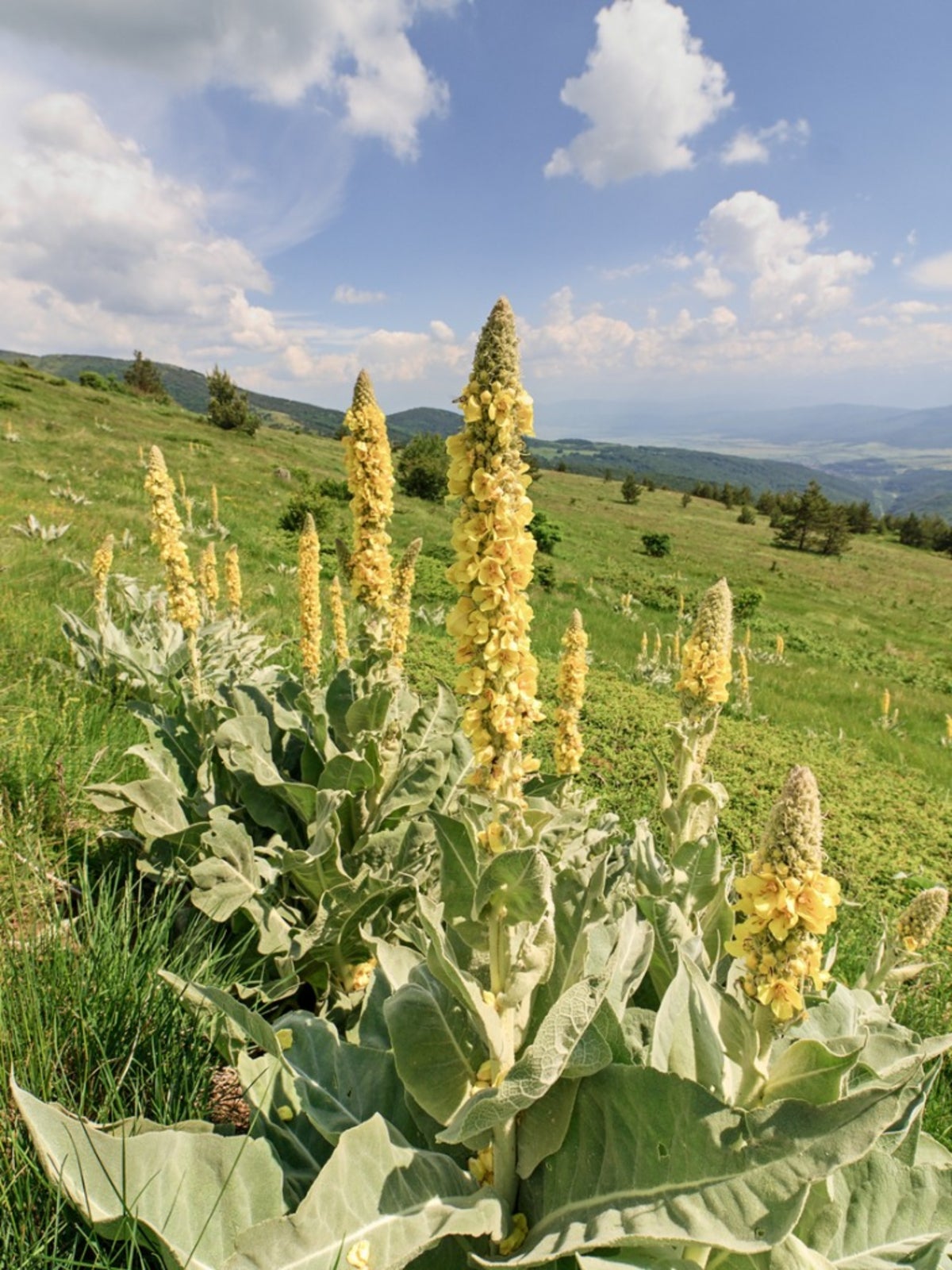Mullein Herb Plants – Tips On Using Mullein As Herbal Treatments


Mullein herb plants, which can reach heights of 6 feet (2 m.) are considered noxious weeds by some people, while others consider them to be valuable herbs. Read on to learn about mullein herbal uses in the garden.
Mullein as Herbal Treatments
Mullein (Verbascum thapsus) is an herbaceous plant that produces large, woolly, grayish-green leaves and bright yellow flowers in summer, followed by egg-shaped, pale brown fruits in fall. Although mullein is native to Asia and Europe, the plant has naturalized across the United States since it was introduced in the 1700s. You may know this common plant as big taper, velvet dock, flannel-leaf, lungwort, or velvet plant. The plant has been utilized throughout history for its herbal properties. Medicinal uses for mullein can include:
- Earaches, middle ear infections
- Coughs, bronchitis, asthma, and other respiratory problems
- Sore throat, sinus infection
- Migraine
- Menstrual cramps
- Arthritis and rheumatism
- Urinary tract infection, urinary incontinence, bedwetting
- Skin diseases, bruises, frostbite
- Toothache
How to use Mullein from the Garden
To make mullein tea, pour a cup of boiling water over a small amount of dried mullein flowers or leaves. Allow the tea to steep for five to 10 minutes. Sweeten the tea with honey if you don’t like the bitter flavor. Make a poultice by grinding dried flowers and/or leaves to a fine powder. Mix the powder with water to make a thick paste. Spread the poultice evenly on the affected area, then cover it with gauze or muslin. To avoid making a mess, cover the poultice with plastic wrap. (Native Americans simply heated mullein leaves and applied them directly to the skin.) Create a simple infusion by filling a glass jar with dried mullein leaves. Cover the leaves with oil (such as olive or sunflower oil) and place the jar in a cool place for three to six weeks. Strain the oil through a cloth-lined strainer and store it at room temperature. Note: There are several effective ways to make an herbal infusion. An online search or a good herbal manual will provide more complete information about herbal infusions. Disclaimer: The contents of this article is for educational and gardening purposes only. Before using or ingesting ANY herb or plant for medicinal purposes or otherwise, please consult a physician or a medical herbalist for advice.
Gardening tips, videos, info and more delivered right to your inbox!
Sign up for the Gardening Know How newsletter today and receive a free copy of our e-book "How to Grow Delicious Tomatoes".

A Credentialed Garden Writer, Mary H. Dyer was with Gardening Know How in the very beginning, publishing articles as early as 2007.
-
 Looking For Plants To Give You The Soft And Fuzzies? Try These 5 Fuzzy Leaf Plant Options
Looking For Plants To Give You The Soft And Fuzzies? Try These 5 Fuzzy Leaf Plant OptionsLovers of texture, drama, silver foliage and tactile plants will adore these special sensory garden additions. These fuzzy leaf plant options will leave you all aglow
By Susan Albert
-
 Get Ready For A Summer Of Hummers! Grow These Full Sun Hummingbird Plants and Flowers
Get Ready For A Summer Of Hummers! Grow These Full Sun Hummingbird Plants and FlowersIf you’re lucky enough to enjoy a sunny backyard, make sure you are maxing out on your pollinator opportunities and grow these full sun hummingbird plants and flowers
By Tonya Barnett
-
 Deadheading Mullein Plants – Should I Deadhead My Verbascum Flowers
Deadheading Mullein Plants – Should I Deadhead My Verbascum FlowersMullein is a plant with a complicated reputation. To some it is a weed, but to others it is an indispensable wildflower. Even if you want to grow mullein, it's a good idea to deadhead its tall flowering stalks before they form seeds. Learn how to deadhead mullein in this article.
By Liz Baessler
-
 Greek Mullein Flowers: How To Grow Greek Mullein Plants
Greek Mullein Flowers: How To Grow Greek Mullein PlantsGrowing Olympic Greek mullein is not difficult if you plant the long-lived flowers appropriately and in the right spot. This article will help get you started with growing these interesting plants in your garden.
By Teo Spengler
-
 What Is Mullein: Learn About Growing Mullein Uses And Disadvantages
What Is Mullein: Learn About Growing Mullein Uses And DisadvantagesYou've likely seen mullein plants growing in fields and along roadsides. They're often attractive, with tall spikes of yellow flowering rosettes. Read this article to learn more about this interesting plant.
By Becca Badgett